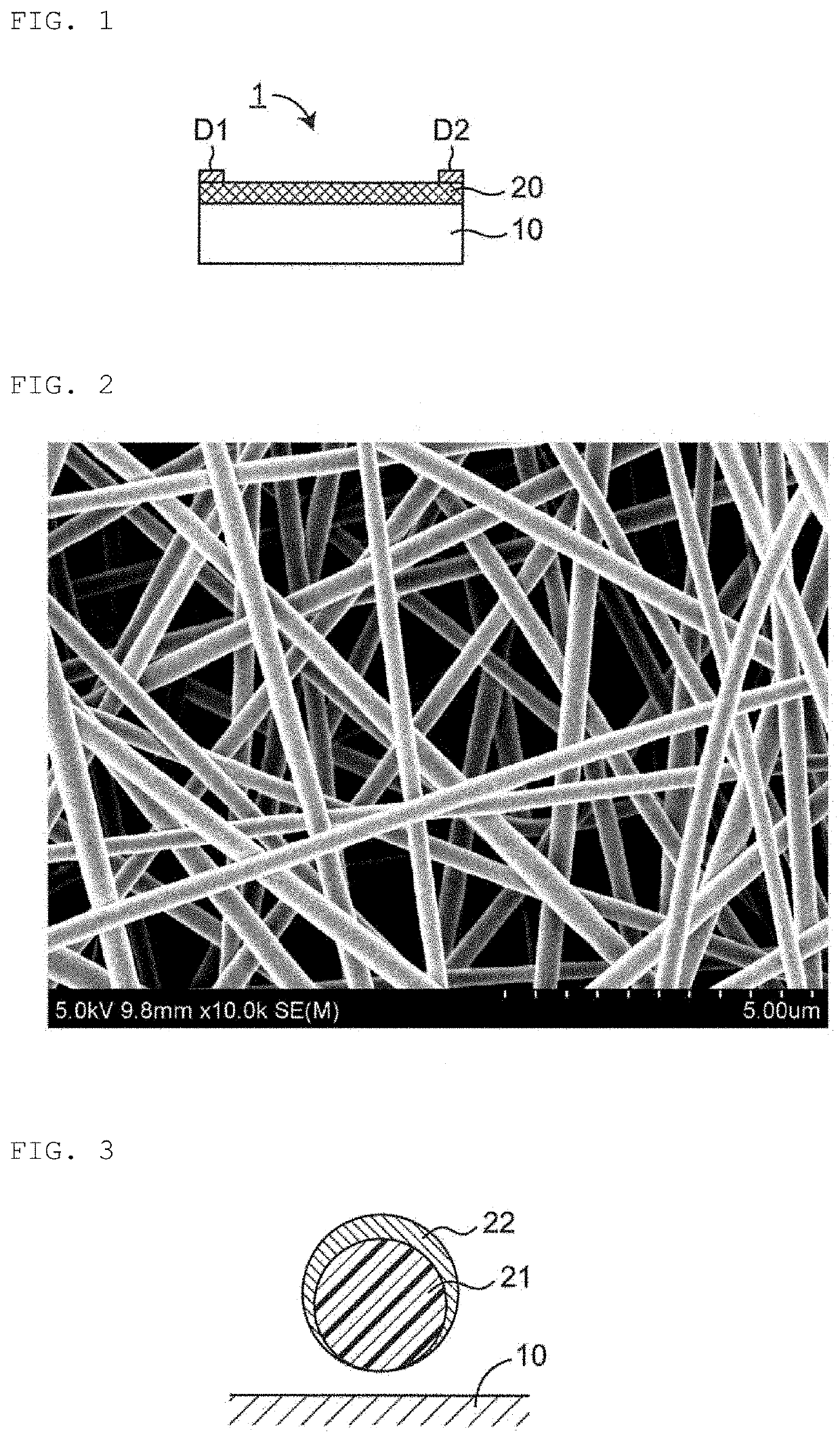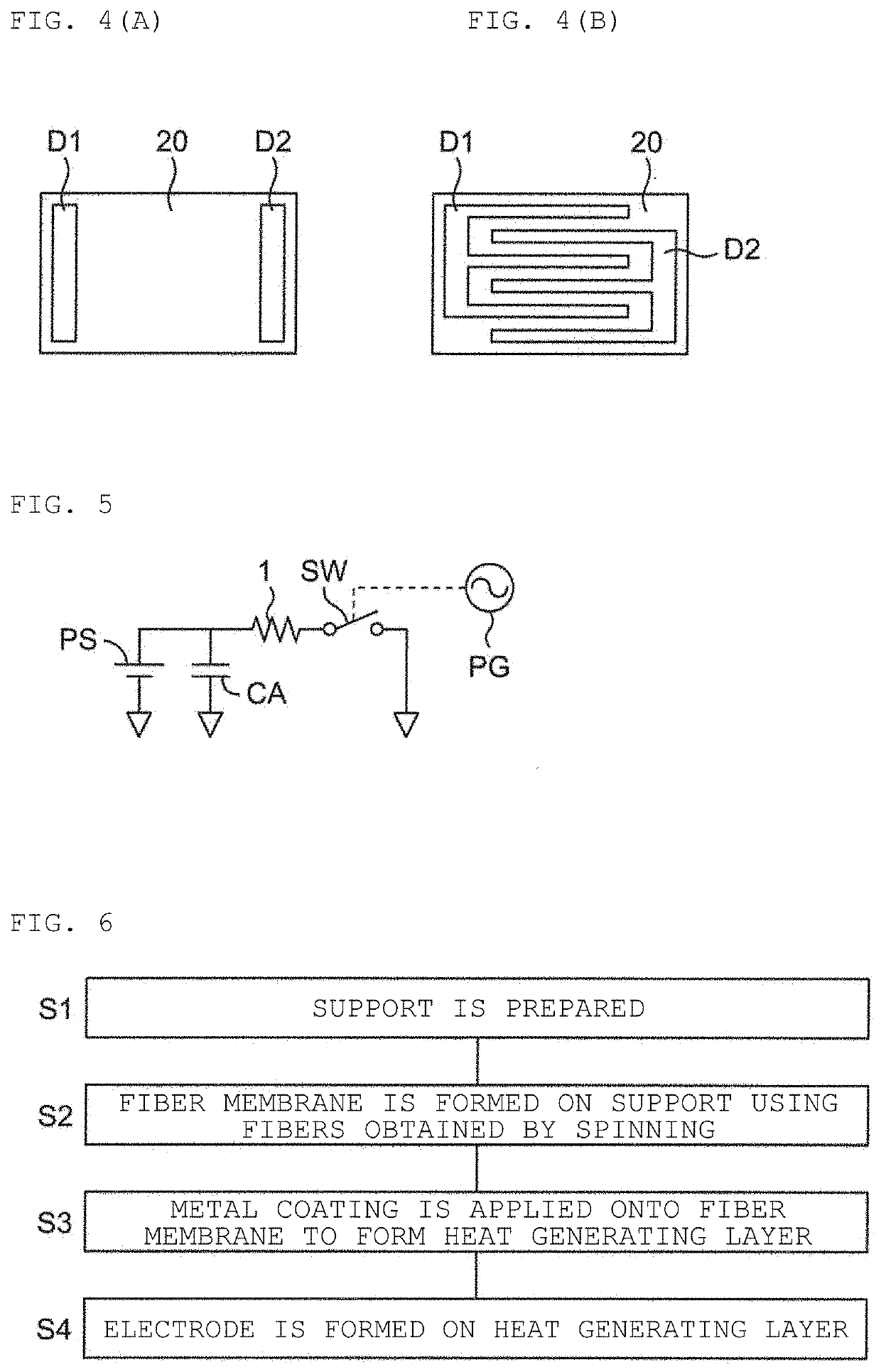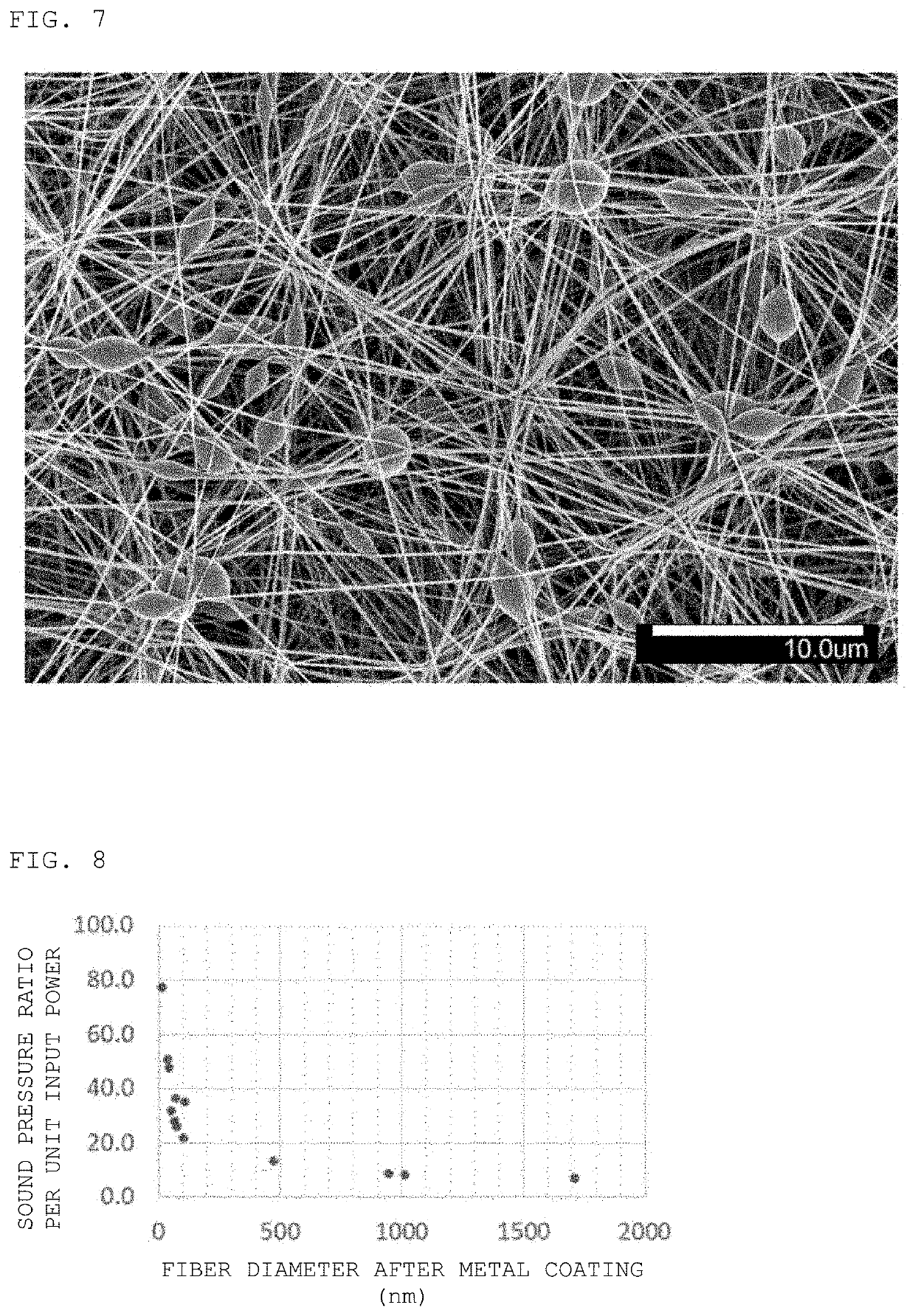Pressure wave generating element and method for producing the same
- Summary
- Abstract
- Description
- Claims
- Application Information
AI Technical Summary
Benefits of technology
Problems solved by technology
Method used
Image
Examples
first exemplary embodiment
[0042]FIG. 1 is a sectional view illustrating an example of a pressure wave generating element 1 according to a first exemplary embodiment.
[0043]As shown, the pressure wave generating element 1 includes a support 10, a heat generating layer 20, and a pair of electrodes D1 and D2. The support 10 is formed of a semiconductor such as silicon or an electrical insulator such as glass, ceramic, or a polymer. A heat insulating layer having a lower thermal conductivity than that of the support 10 is provided on the support 10, so that heat dissipation from the heat generating layer 20 to the support 10 is suppressed. As described later, when the heat generating layer 20 has a heat insulating function, the above-described heat insulating layer may be omitted in an exemplary aspect.
[0044]The heat generating layer 20 is provided or disposed on the support 10. The heat generating layer 20 is formed of a conductive material, is electrically driven to generate heat by flowing a current, and emits...
second exemplary embodiment
[0051]FIG. 6 is a flowchart illustrating an example of a method for producing a pressure wave generating element according to an exemplary aspect. First, in step S1, the support 10 is prepared.
[0052]Next, in step S2, a fiber membrane is formed on the support 10 using fibers obtained by spinning. As a spinning method, a melt blowing method, a flash spinning method, a centrifugal spinning method, a melt spinning method, or the like can be employed. Further, a method in which pulp is crushed and processed into a sheet like a cellulose nanofiber can be employed. In particular, when the electrospinning method is used, nanofibers, submicron fibers, micron fibers, and the like can be realized. The spun fibers can be arranged directly on the support 10 in the form of a nonwoven fabric, or can be arranged on the support 10 in the form of a woven fabric combining warp and wefts, or in the form of a knitted fabric in which fibers are knitted.
[0053]Next, in step S3, a metal coating is applied o...
example 1
[0055](Sample Preparation Method)
[0056]A pressure wave generating element was produced by the following method (Sample 1).
[0057]A polyvinylidene fluoride (PVDF) solution prepared using a mixed solvent of N,N-dimethylformamide (DMF) and acetone (DMF:acetone=6:4) as a solvent was used as a spinning solution. The solution concentration was adjusted to 10 wt %.
[0058]Using this solution, PVDF fibers were spun on a Si substrate (675 μm thick) by an electrospinning method to form a fiber membrane of a nonwoven fabric. In order to enhance the adhesiveness between the fiber membrane and the support, an adhesive layer such as a phenoxy resin may be appropriately introduced into the interface between the Si substrate and the fiber membrane. A natural oxide film (SiO2) was formed on the surface of the Si substrate.
[0059]In this method, the electrospinning conditions were an applied voltage of 20 kV, a distance of 15 cm between a nozzle and the support, and a film formation time was adjusted so ...
PUM
 Login to View More
Login to View More Abstract
Description
Claims
Application Information
 Login to View More
Login to View More - R&D
- Intellectual Property
- Life Sciences
- Materials
- Tech Scout
- Unparalleled Data Quality
- Higher Quality Content
- 60% Fewer Hallucinations
Browse by: Latest US Patents, China's latest patents, Technical Efficacy Thesaurus, Application Domain, Technology Topic, Popular Technical Reports.
© 2025 PatSnap. All rights reserved.Legal|Privacy policy|Modern Slavery Act Transparency Statement|Sitemap|About US| Contact US: help@patsnap.com



